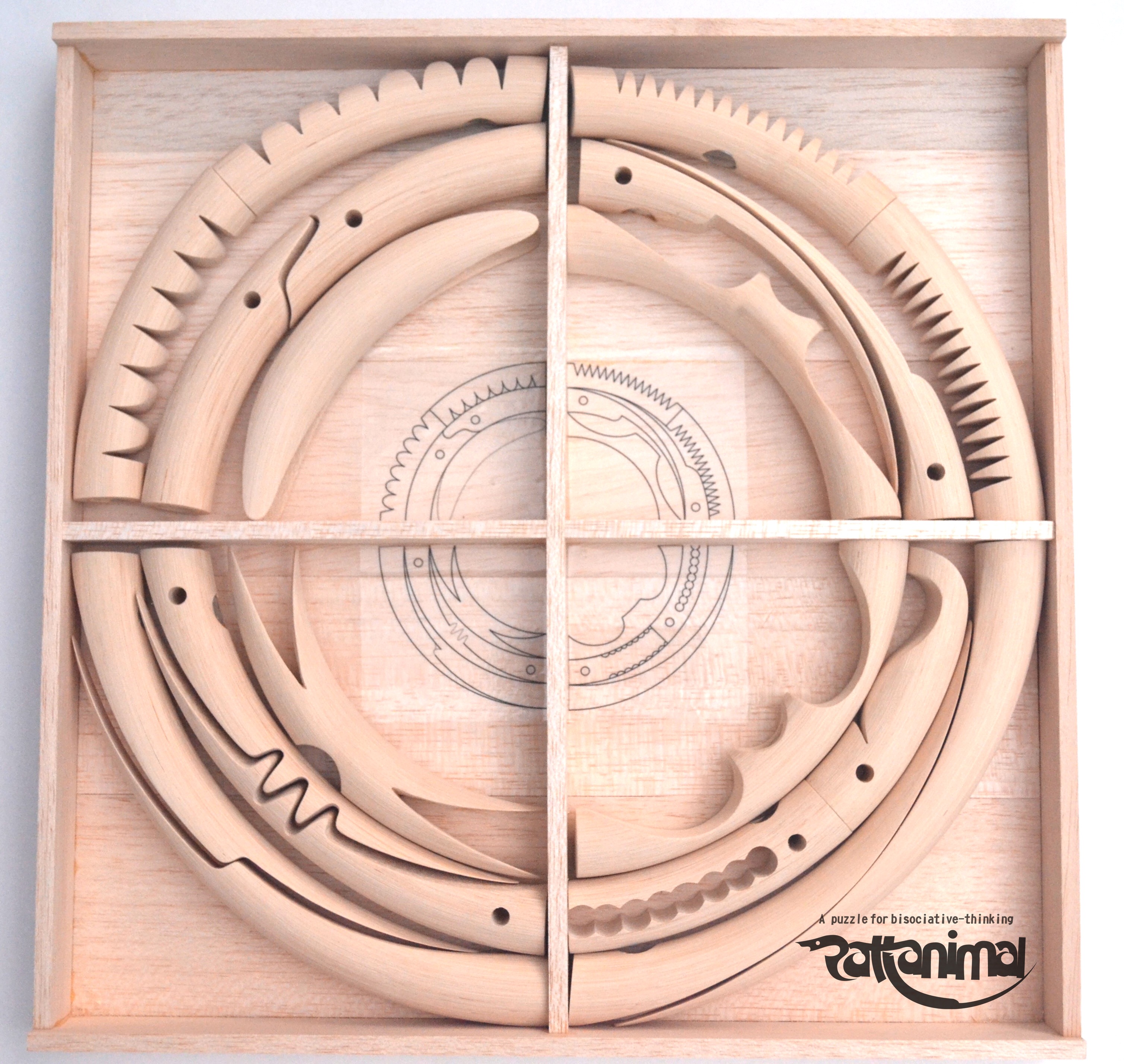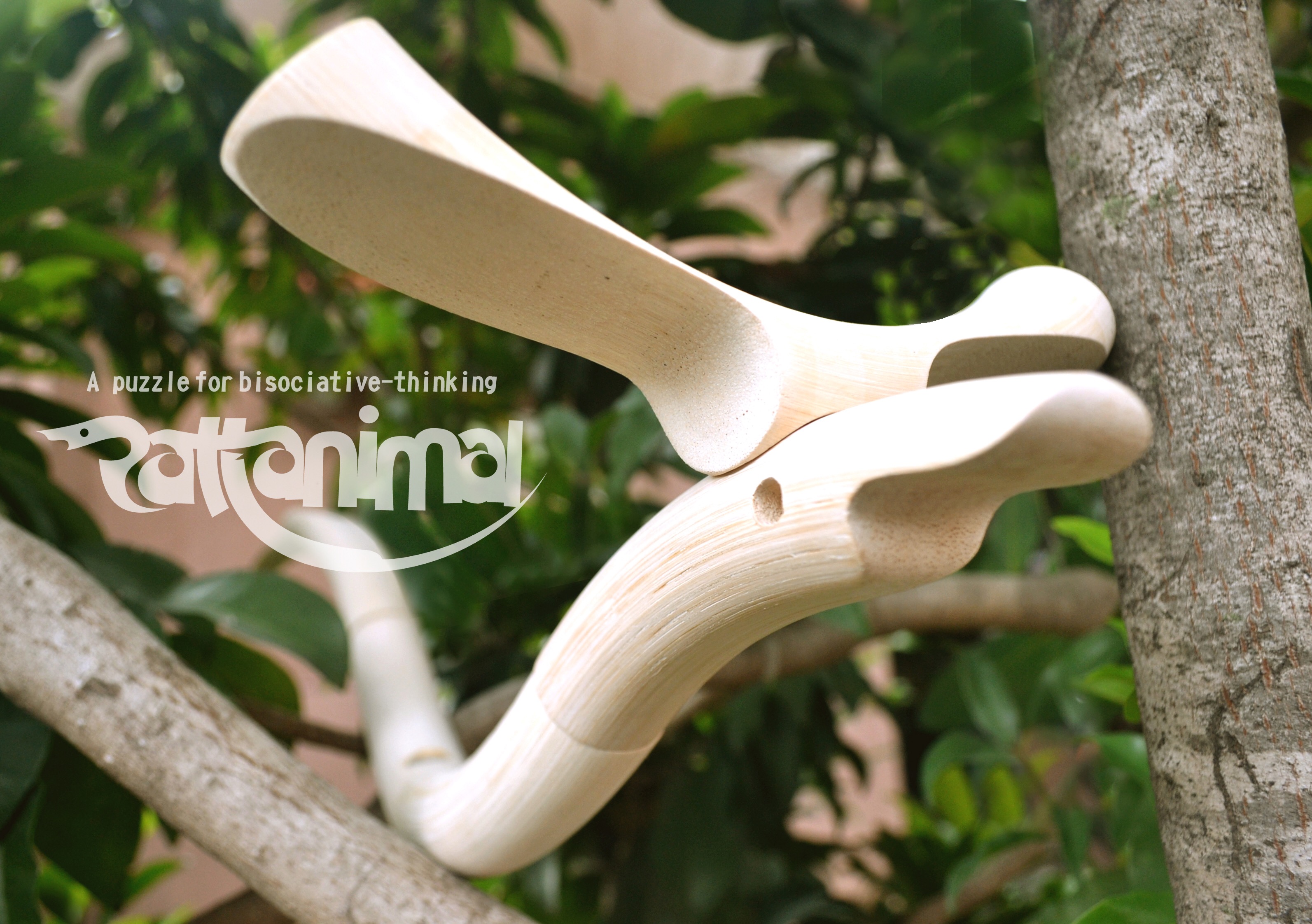ITB Exhibition: Processing Rattan, ITB Developed Traditional Toy Products
By Vinskatania Agung A
Editor Vinskatania Agung A

 BANDUNG, itb.ac.id - Learning through playing is one of the effective way to educate children. No wonder that today many toy factories produce toys with educational priority in its design. Moving on from this thought, a team of researchers from ITB carried an associated research on educational toys for children using typical material from Indonesia named rattan. Through Research Center for Culture Product and Environment (PPPBL) from the Institute for Organization Research and Community Service (LPPM) ITB, the study was designed to develop the Small and Medium Enterprises (UKM) to raise the selling value of rattan.
BANDUNG, itb.ac.id - Learning through playing is one of the effective way to educate children. No wonder that today many toy factories produce toys with educational priority in its design. Moving on from this thought, a team of researchers from ITB carried an associated research on educational toys for children using typical material from Indonesia named rattan. Through Research Center for Culture Product and Environment (PPPBL) from the Institute for Organization Research and Community Service (LPPM) ITB, the study was designed to develop the Small and Medium Enterprises (UKM) to raise the selling value of rattan.  In the 57th anniversary of ITB, the results of this research was exhibited in the East Hall ITB on Wednesday-Saturday (2-5/03/16). The research entitled "Product Development of Traditional Rattan Toy" became one of 2015's Excellence Research Program in PPPBL LPPM ITB. The research team consisted of Drs. Budi Isdianto, M.Sn. (Lecturer of Interior Design ITB), Ir. Oemar Handojo, M.Sn. (Lecturer of Product Design ITB), Deny Willy Junaidy, PhD. (Senior Lecturer of Universiti Malaysia Kelantan and Impermanent Lecturer of ITB), and assisted by Krissandi, Muhammad Alfath, and Fajrin Ramdani. In addition, in its development this study worked closely with Apikayu Foundation and the Association for Small Business Development (PUPUK). Through the abstract presented, this idea appeared to provide direct economic impact to the community of rattan craftsmen in Cirebon.
In the 57th anniversary of ITB, the results of this research was exhibited in the East Hall ITB on Wednesday-Saturday (2-5/03/16). The research entitled "Product Development of Traditional Rattan Toy" became one of 2015's Excellence Research Program in PPPBL LPPM ITB. The research team consisted of Drs. Budi Isdianto, M.Sn. (Lecturer of Interior Design ITB), Ir. Oemar Handojo, M.Sn. (Lecturer of Product Design ITB), Deny Willy Junaidy, PhD. (Senior Lecturer of Universiti Malaysia Kelantan and Impermanent Lecturer of ITB), and assisted by Krissandi, Muhammad Alfath, and Fajrin Ramdani. In addition, in its development this study worked closely with Apikayu Foundation and the Association for Small Business Development (PUPUK). Through the abstract presented, this idea appeared to provide direct economic impact to the community of rattan craftsmen in Cirebon.
Rattan toy products were designed to have an easy and fast technique in its making so it is more economical. The toy products gave concern to child development for the age of 6-12 years. The physical characteristics of rattan material that are elastic, cylindrical, light, flexible, and secure were the basis for the development of various forms of toys that could contribute to stimulate cognitive creativity of children. Synthesis of the design considered as the basic characteristics of curvature, configuration pattern, practicality, and efficiency of the production techniques of construction. Toys manufactured were Rattanimal Puzzle, Chess Rattan/Rattan Chess Set, special toys for early childhood Education or Edc Rattan Toys.
Three concepts of Rattan's Masterpiece
The concept of the Rattanimal design was a stringing game (puzzle) that stimulate children's creativity. Using Bisociation and Concept Blending theory which states that combining two different or colliding concepts could produce an unfamiliar concept and potentially became a creative concept. Instead, Rattanimal developed a concrete animal that form a confusing shape, such as bird shapes like fish that can move along the ground or a bull shapes like snake that can fly. This allowed child to perform abstract thinking and exploratory and was believed to encourage creative thinking processes of a person.
 On the other hand, a chess game was based on high waste of a moderate-sized rattan pieces (10-15 cm) which are difficult to be used in the rattan furniture industry. Rattan pieces are usually then burned. Chess rattan mainly produced with the lathe techniques. The whole pawns was designed to have the same basic pattern and tended to produce a primitive form so it made the manufacturing process easy. The chessboards had its uniqueness since it was made of pieces of rattan mats that linked and reinforced with braided rope. For the concept of early childhood toys, educational toys were made of rattan and difficult to be substituted by the wood. Characteristics of early childhood toy produced unique shapes and configurations, which were not difficult to achieve using wood materials.
On the other hand, a chess game was based on high waste of a moderate-sized rattan pieces (10-15 cm) which are difficult to be used in the rattan furniture industry. Rattan pieces are usually then burned. Chess rattan mainly produced with the lathe techniques. The whole pawns was designed to have the same basic pattern and tended to produce a primitive form so it made the manufacturing process easy. The chessboards had its uniqueness since it was made of pieces of rattan mats that linked and reinforced with braided rope. For the concept of early childhood toys, educational toys were made of rattan and difficult to be substituted by the wood. Characteristics of early childhood toy produced unique shapes and configurations, which were not difficult to achieve using wood materials.
Sources of information and pictures: PPPBL LPPM ITB and Apikayu Foundation.

.jpg)

.jpg)
.jpg)
.jpg)
